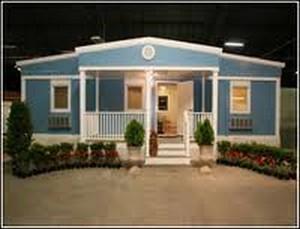DisastersInnovative projects seek emergency housing alternative to FEMA’s trailers
Brownsville, Texas may soon become a model for other hurricane-ravaged cities as community groups institute new emergency housing measures in the wake of inexcusable hold-ups on the part of the Federal Emergency Management Agency (FEMA) in providing reconstruction support to the South Texas coast after $1.35 billion in damage from Hurricane Dolly in 2008.

FEMA looks for trailer alternative // Source: fema.gov
Brownsville, Texas may soon become a model for other hurricane-ravaged cities as community groups institute new emergency housing measures in the wake of inexcusable hold-ups on the part of the Federal Emergency Management Agency (FEMA).
As theMonitor reports, groups like the Community Development Corporation (CDCB) in the city are assessing new ways to provide emergency housing for families in the wake of disasters, following FEMA’s slow response in providing reconstruction support to the South Texas coast after $1.35 billion in damage from Hurricane Dolly in 2008.
The results of this have manifested themselves in a 2009 act called HB 2450, which included recommendations for the “Lower Rio Grande Rapid Re-housing Progam,” or RAPIDO, which constructs simple, quick-construction house with a corrugated tin roof.
When implemented by groups like the CDCB, this replaces the slow turnaround time for many victims who languish in typical FEMA trailers, meant originally as a placeholder while homes are rebuilt. A further twenty RAPIDO projects are planned for construction with just a $2 million portion of the $130 million that has been spent on Hurricane Dolly response.
The focus of RAPIDO homes is on getting victims of federally declared emergencies as quickly as possible so that some semblance of a normal life may resume. Leo Barrera, CDCB’s housing coordinator, told the paper, “The concept is what’s the fastest way to get families back on their property after a hurricane, with a FEMA trailer. Instead of having [one] sitting on your land or sitting out in a field somewhere, you get to the core. So this would serve as your temporary to permanent shelter.”
The government spends $60,000 to $70,000 per FEMA trailer, with people like Barrera calling it a “complete waste of money,” with a RAPIDO house “being permanent, [constituting] a much wiser use of federal tax dollars.”
The goal of RAPIDO is not just to provide worthy homes to victims of disasters, but to influence policy and procedure for future events. The CDCB will monitor the progress of the effort for the next sixteen months in the hopes of developing a manual that can be approved by the state government and implemented during future emergencies.
